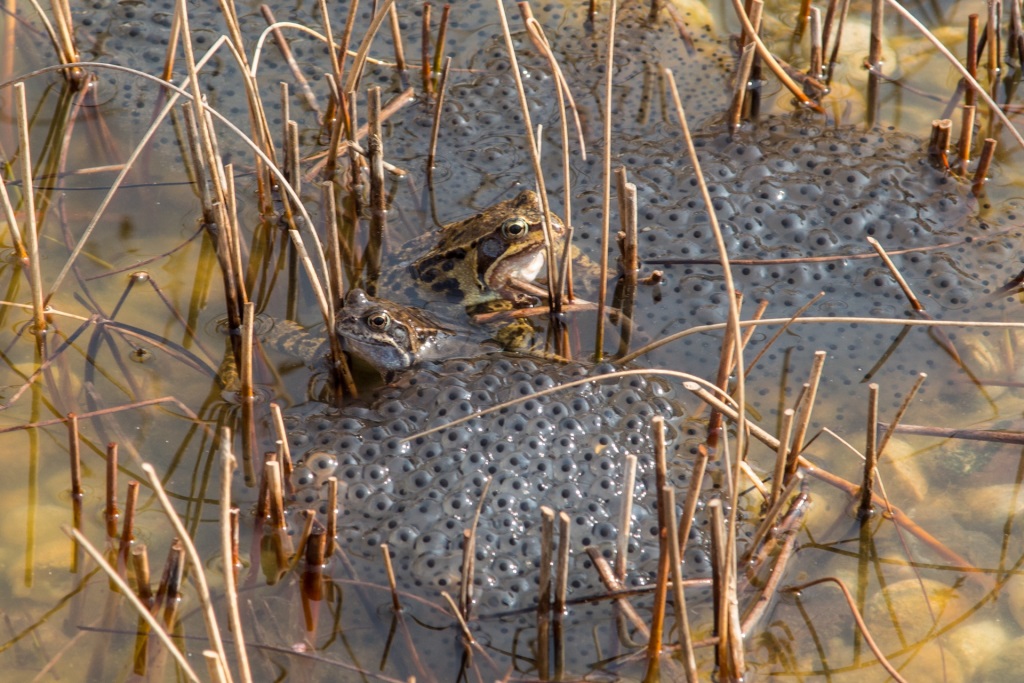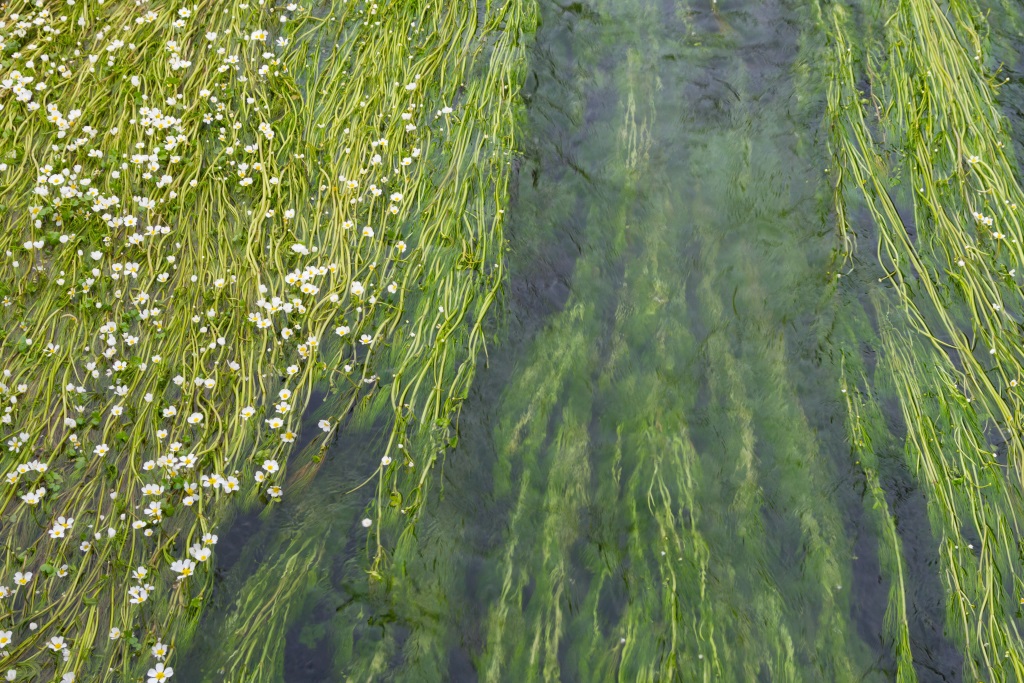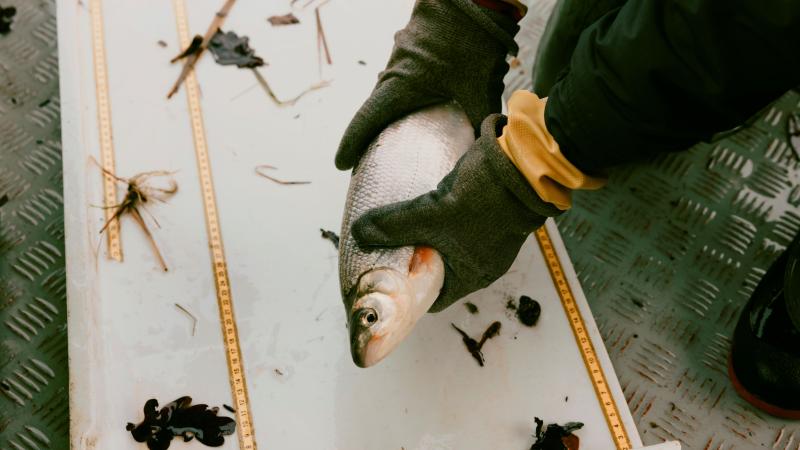
Red salmon lay their spawn in gravelly sections of the rivers. | Photo: 123rf
Who spawns where?
Fish and amphibians as well as a large variety of other organisms reproduce in water. This means that the females lay their eggs, or ‘spawn’ in water, where the males then fertilise them. A batch of eggs comprises up to thousands of eggs. The embryos develop in these eggs until they hatch with their food resource nicely packed up in a yolk sac which helps them to undergo further development without the need to hunt for prey. The length of this process can vary considerably, depending on the species, the water temperature and the development that is comprised in this free embryo phase. While the sturgeon starts to feed 14-18 days after the fertilization of the egg, the development of trout until first feeding can take up to 4 months.
 Geschützter Laichplatz | Foto: Pixabay
Geschützter Laichplatz | Foto: Pixabay
For gravel spawners, the ideal spawning ground provides the offspring shelter from predators, sufficient oxygen availability, as well as the removal of metabolites from their metabolism. Nevertheless, there is no single ideal location for spawn, as different species have different requirements: some larvae hatch in the sea, some in rivers or lakes. Some species rely on a mild current, while others develop better where the current is stronger. The substrate where the spawn is deposited also varies between different species of fish and amphibians. The sturgeon lays its eggs in deep, strong-flowing areas of the river, where the spawn can stick to the gravel of the riverbed. Other species protect their spawn from the current and predators by attaching their eggs to submerged vegetation or on branches, even free flowing eggs are rather common.
What does the life of a young fish look like?
Unlike birds and mammals, most species of fish do not show parental care, to protect or incubate their eggs, but rather leave the eggs immediately after fertilization. The juvenile fish depend on their own and have to face the challenges of nature themselves. As the soft shell of their eggs offers little protection from predators hiding of the batch of eggs increases the chances of survival. Otherwise the offspring need a lot of luck and a lot of conspecifics to prevent predation.
 Plants serve as hiding place | Photo: 123rf
Plants serve as hiding place | Photo: 123rf
However, the spawning grounds need to not just fulfil the needs of the unborn embryos. The freshly-hatched larvae also spend a few days up to a few months at the spawning grounds until their yolk supplies are depleted. After emergence from the spawning sites the fry starts searching for food. This usually consists of small water organisms, which the larvae has to actively search and hunt.
How are water protection and species protection related?
Our waters are used by a lot of people in many different ways: farmers use water from the rivers to irrigate their fields and discharge, just like the people in the cities and villages, who deposit their wastewater as well as industrial production remains into the rivers. Flood protection destroys the habitats in the river valley by interrupting the exchange of water between mainstem river and its wetlands. Dams regulate flow and interrupt the river continuum. Shipping also depends on our inland waters and oceans, which serve as a link between destinations.
These diverse types of utilization leave marks in the ecosystems and have a high potential to destroy the diversity of habitats in rivers and seas by measures to increase the facilitation of human usage. The expansion of watercourses for use in shipping in particular leads to the loss of important sections of river such as wetlands, which many fish use as spawning and nursery grounds. These measures reduce the capacity of the rivers to self-purify the water and retain floods. Additionally, the obstruction of rivers through weirs and dams often means that many migratory fish are unable to reach their suitable breeding grounds. Among other migratory fish, this includes the sturgeon, the adults of which travel hundreds of kilometres upstream to spawn. Trawling nets with heavy chains utilized in commercial fishing often lead to the destruction of extensive habitats, such as cold water reefs and seaweeds. These, as well as other areas close to the sea floor, serve as spawning grounds for many fish.
When suitable spawning grounds for the offspring are lost, the fish become increasingly rare. To maintain the population of a species, its reproduction and its recruitment into adulthood must be ensured and, thus, the areas where they live and breed need to be fully functional.



